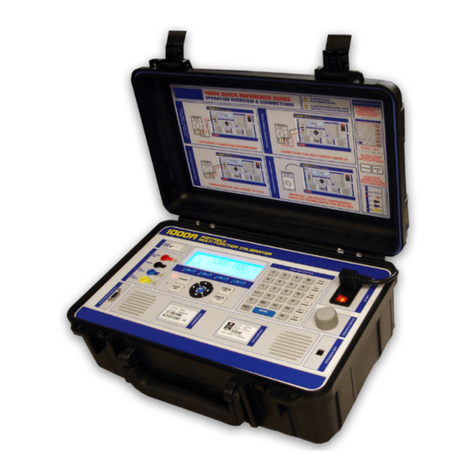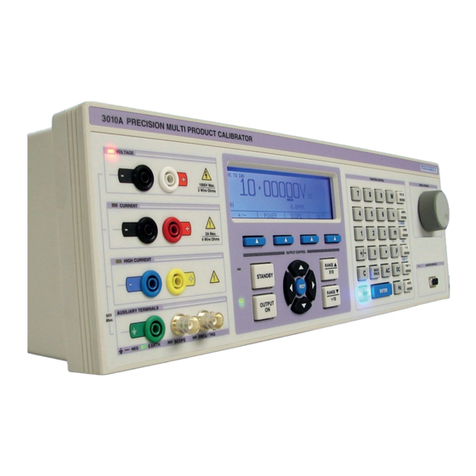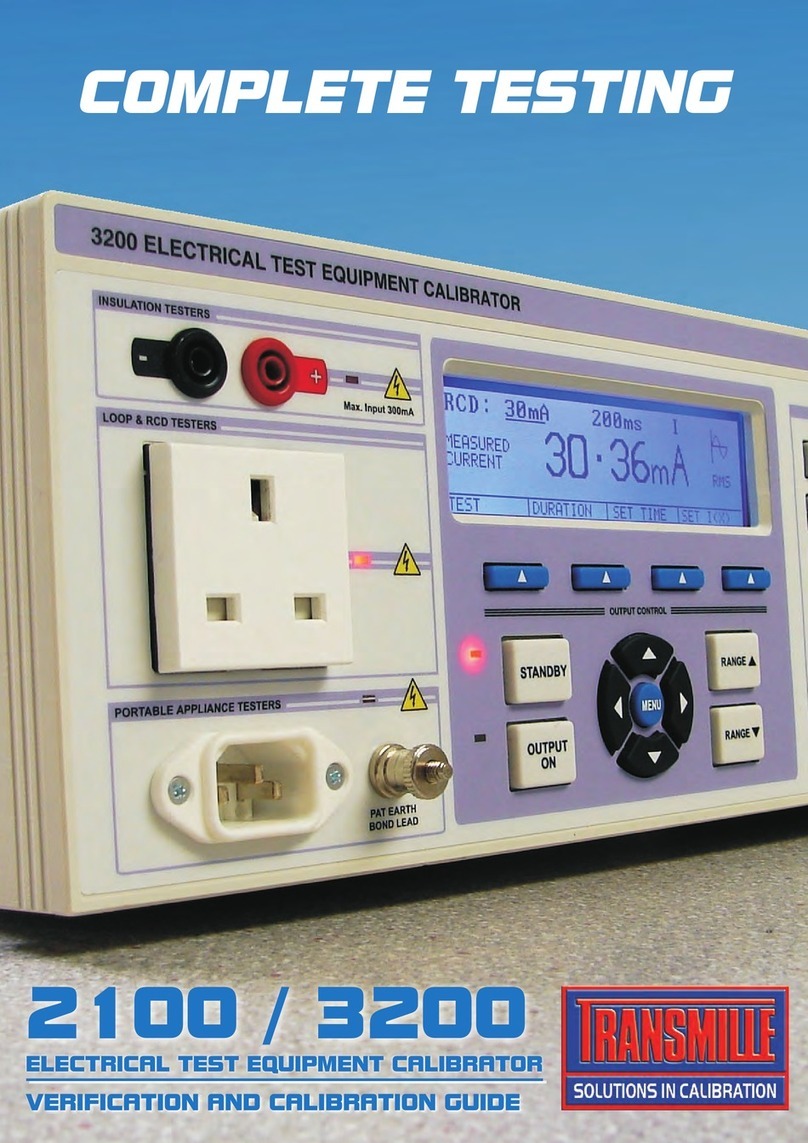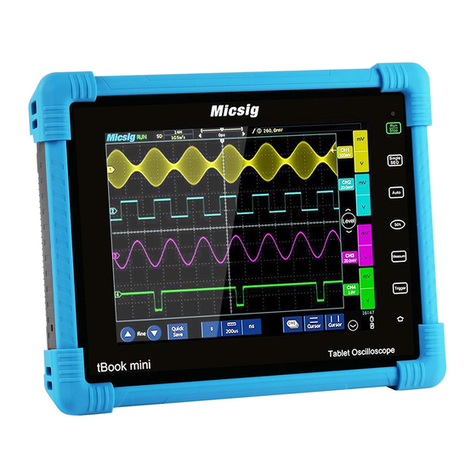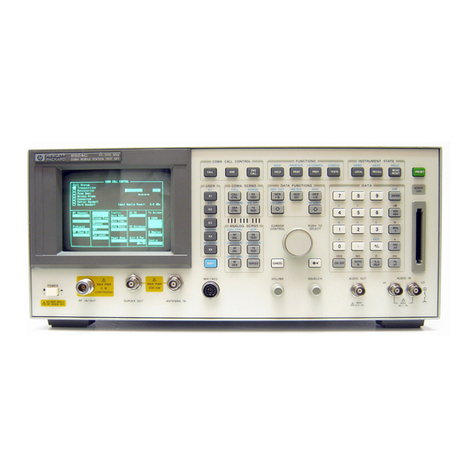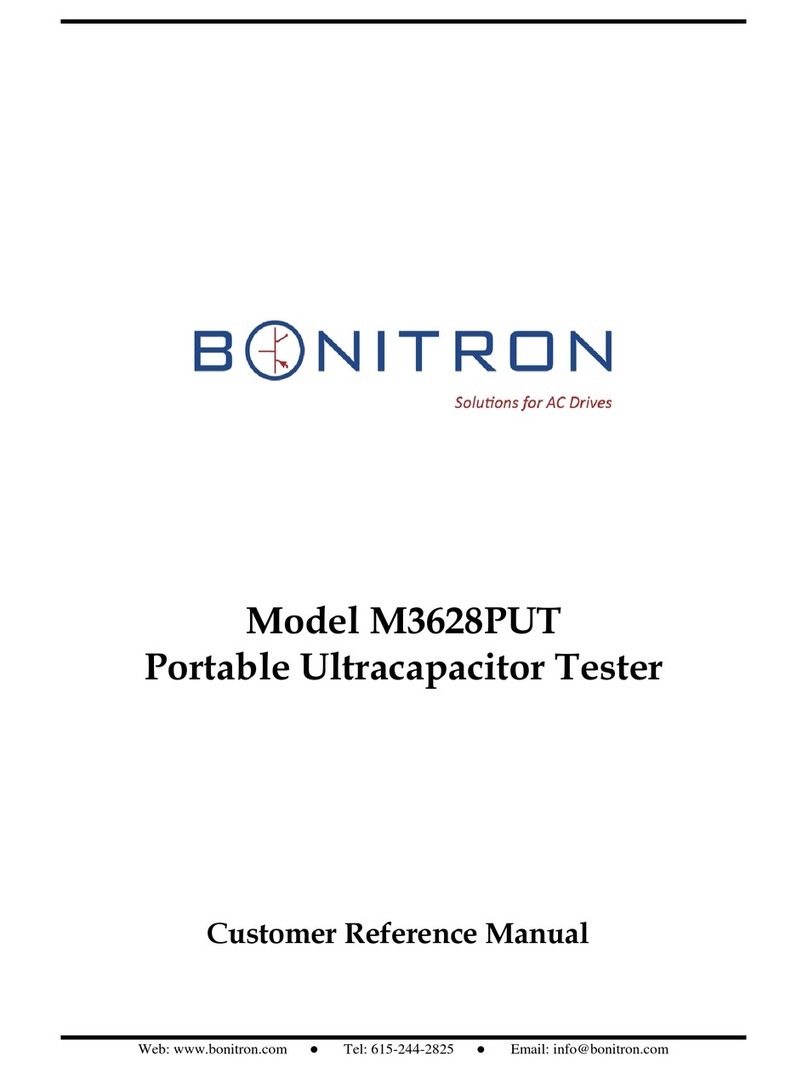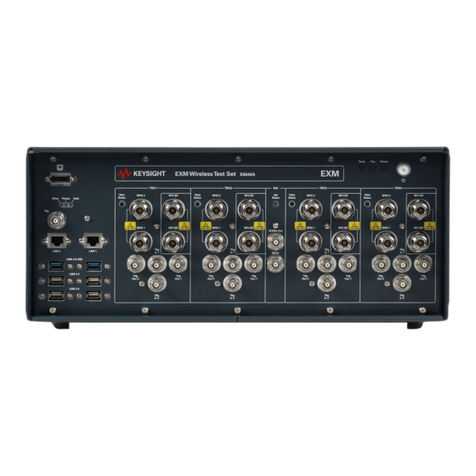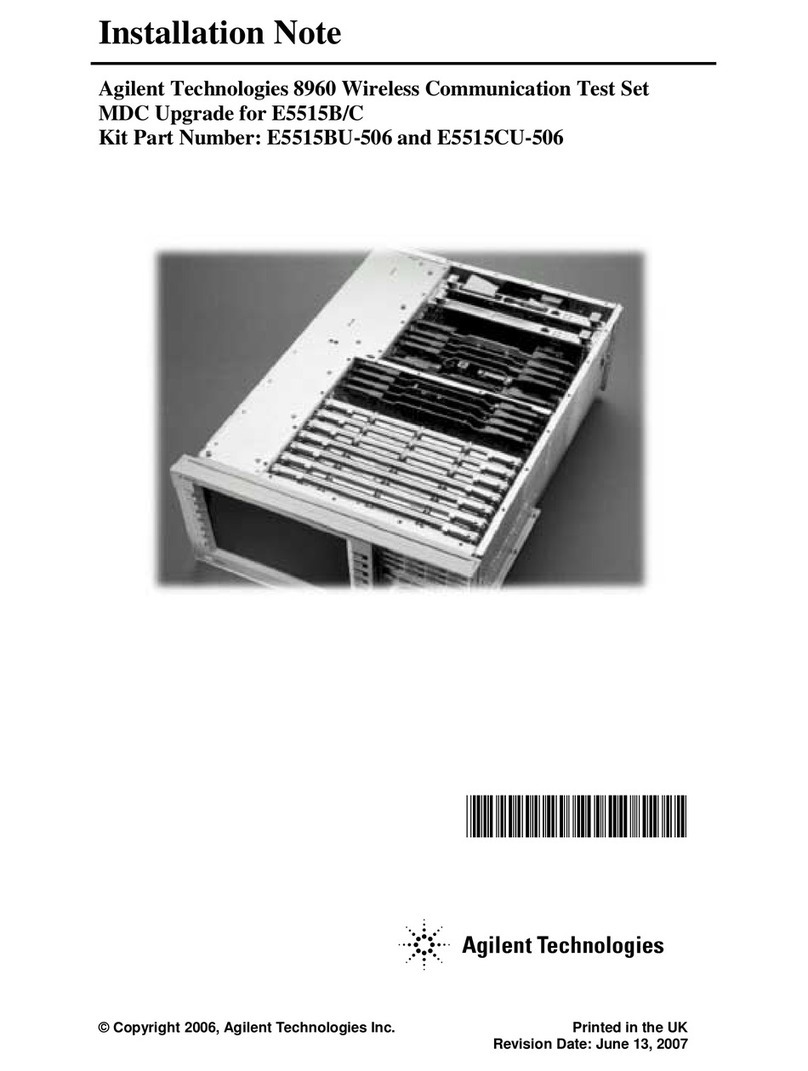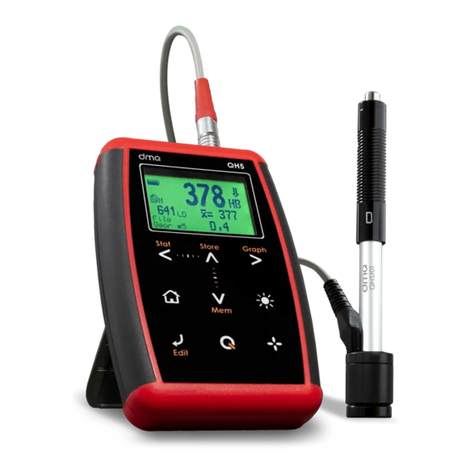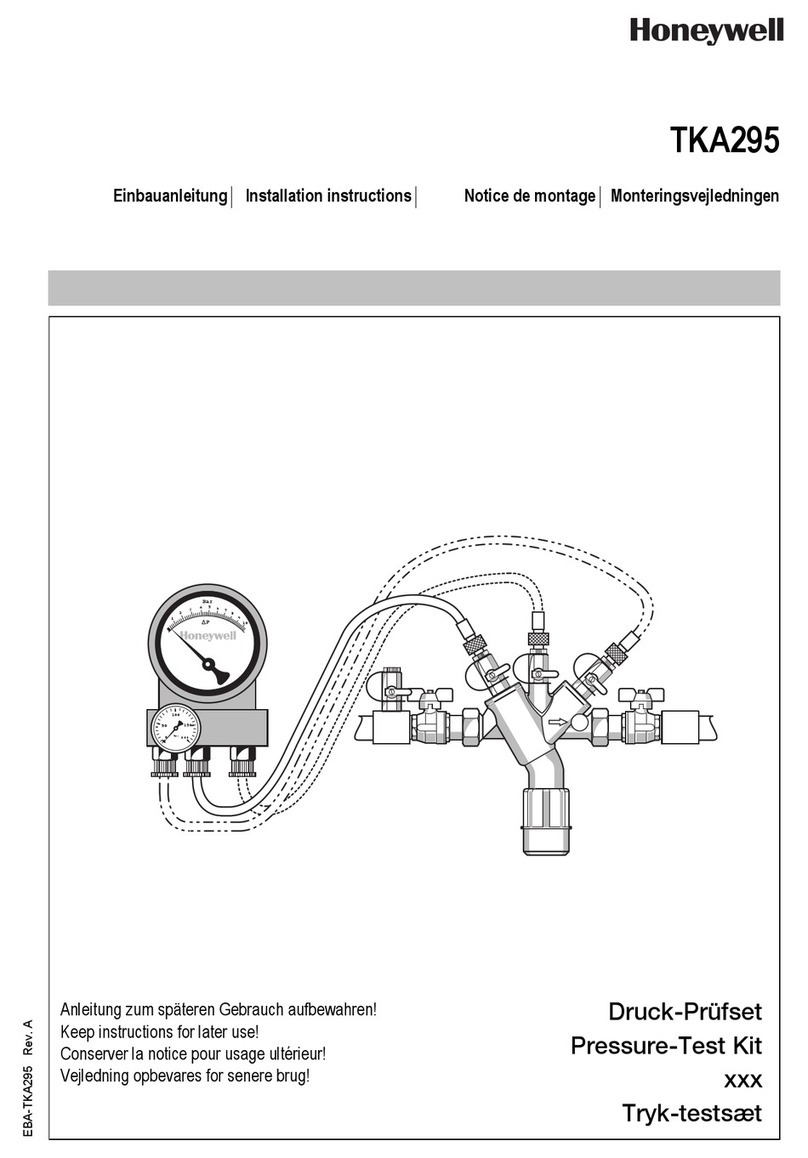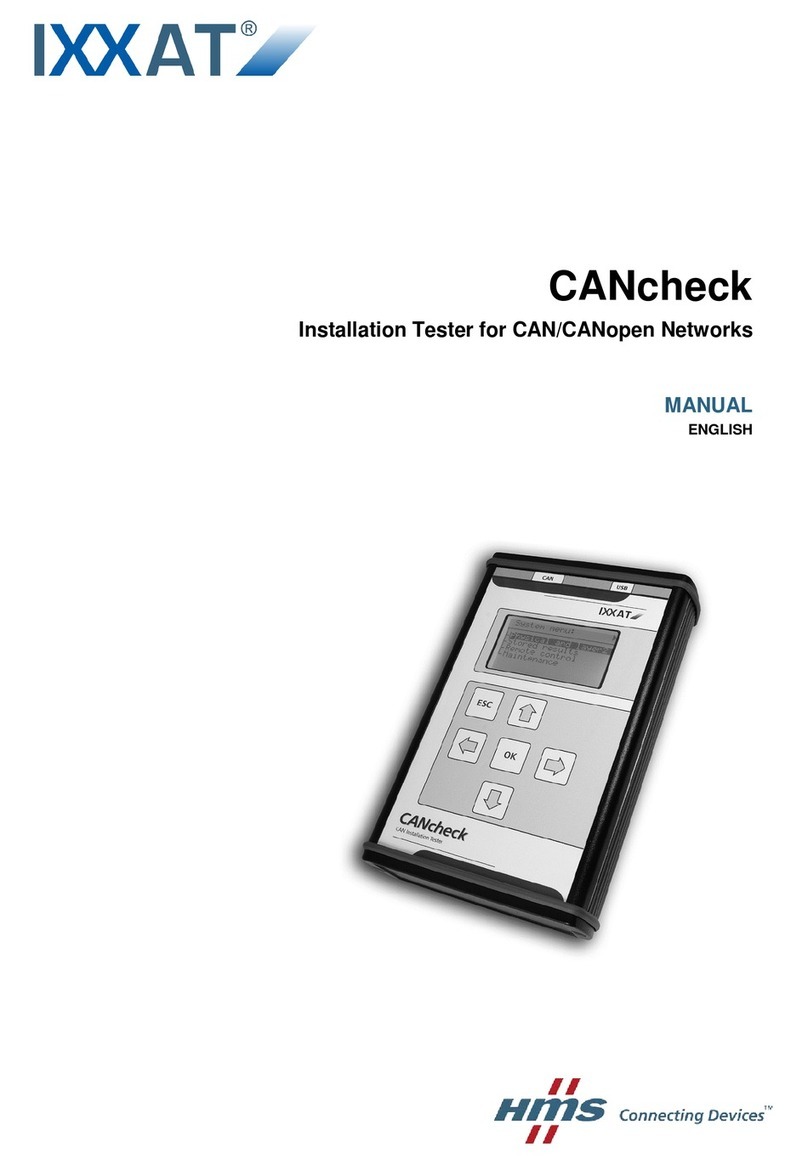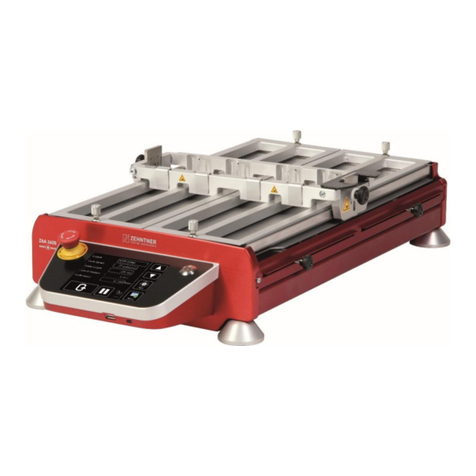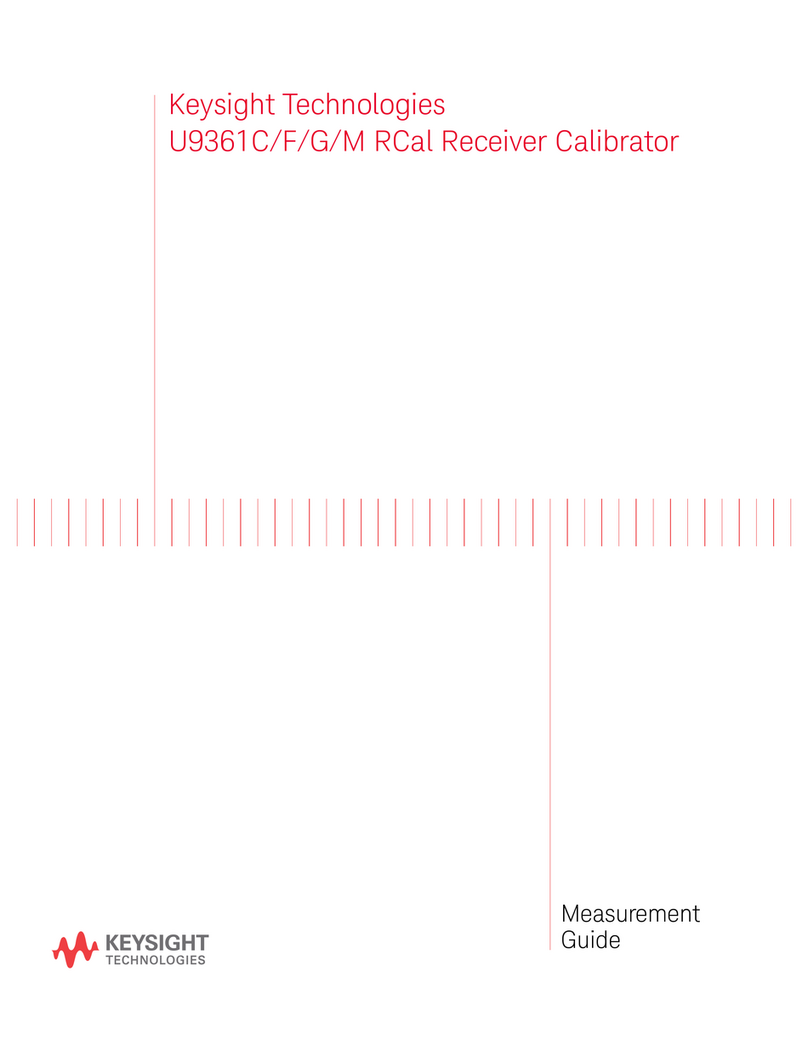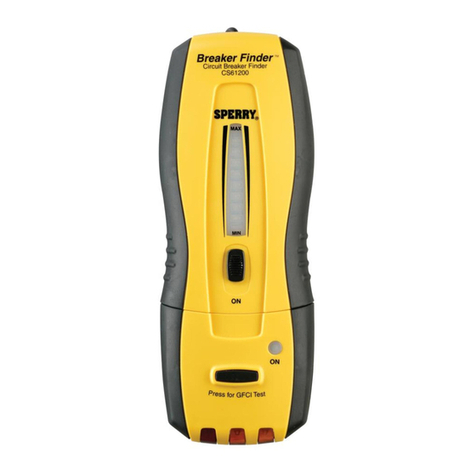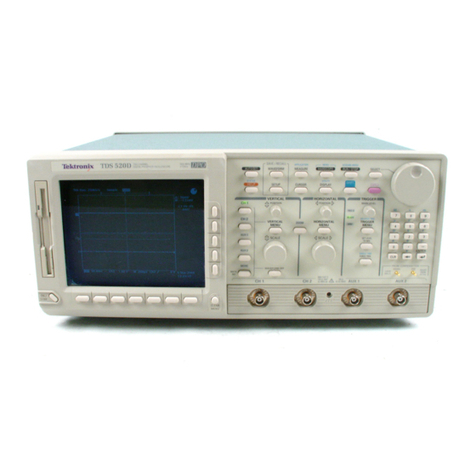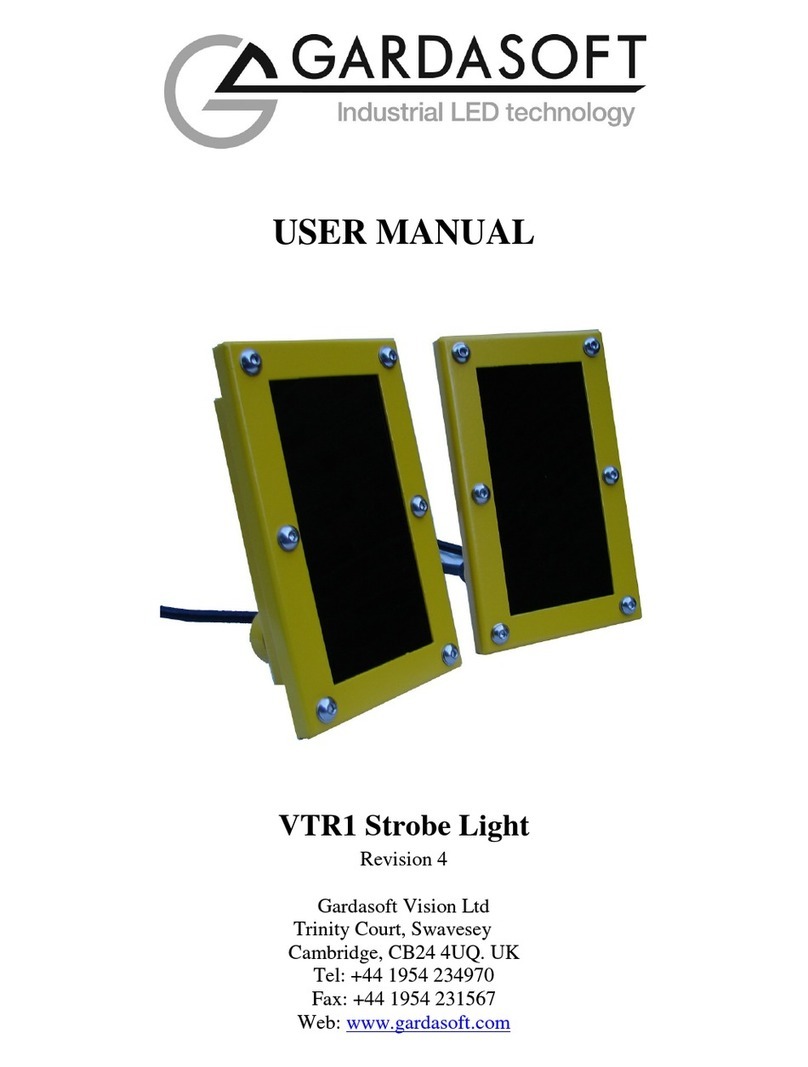Transmille 4610M Use and care manual

Model 4610M
Advanced Multi Product Calibrator
Performance Verification & Calibration Manual
Version 2.04 : October 2021
All product names are trademarks of their respective companies

Model 4610M Verication & Calibration Manual
TRANSMILLE LTD. Revision 2.04 - October 2021 Page 2
TABLE OF CONTENTS
1. Introduction................................................................................................................................. 7
1.1. Main Features...................................................................................................................................................7
1.2. Accuracy and Functionality ..............................................................................................................................7
1.3. True Multiproduct Calibration ...........................................................................................................................7
1.4. Retro Fit Options...............................................................................................................................................7
1.5. USB Interface ...................................................................................................................................................7
1.6. GPIB (IEEE488) Interface.................................................................................................................................8
1.7. Output Terminals...............................................................................................................................................8
2. Calibration & Adjustments ...................................................................................................... 10
2.1. Introduction .....................................................................................................................................................10
2.2. Equipment Required .......................................................................................................................................10
2.3. ConguringforMeasurements........................................................................................................................ 11
2.4. Getting the best out of the calibrator. 11
2.4.1. Making Good Measurements 11
2.4.2. Thermally generated EMF voltage errors. 12
2.4.3. Lead/Connection Resistance 12
2.4.4. Power line and low frequency Pick up and noise 13
2.5. General ...........................................................................................................................................................13
2.5.1. Electrical Safety Tests ......................................................................................................................13
2.5.2. Cleaning of the Fan Duct..................................................................................................................13
2.5.3. Cleaning the external case 13
2.6. Calibration.......................................................................................................................................................14
2.6.1. Calibration Uncertainties ..................................................................................................................14
2.6.2. Beginning Calibration ......................................................................................................................15
2.6.3. DC Voltage .......................................................................................................................................19
2.6.4. DC Current .......................................................................................................................................25
2.6.5. AC Voltage........................................................................................................................................29
2.6.6. AC Current........................................................................................................................................33
2.6.7. 2 Wire Resistance (Passive) 35
2.6.8. 4 Wire Resistance (Passive) 37
2.6.9. Simulated Resistance.......................................................................................................................38
2.6.10. Passive Capacitance........................................................................................................................41
2.6.11. Simulated Capacitance.....................................................................................................................42
2.6.12. Thermocouple Source ......................................................................................................................44
2.6.13. Thermocouple Measure....................................................................................................................45
2.6.14. Thermocouple Cold Junction Measurement 46
2.6.15. Frequency Adjustment......................................................................................................................47

Model 4610M Verication & Calibration Manual
TRANSMILLE LTD. Revision 2.04 - October 2021 Page 3
3. Verication ................................................................................................................................ 48
3.1. DC Voltage......................................................................................................................................................48
3.2. AC Voltage ......................................................................................................................................................50
3.3. DC Current......................................................................................................................................................53
3.4. AC Current......................................................................................................................................................54
3.5. 2 2 Wire Passive Resistance ..........................................................................................................................57
3.6. 4 Wire Passive Resistance .............................................................................................................................59
3.7. Simulated Resistance - 4 Wire .......................................................................................................................61
3.8. Simulated Resistance - 2 Wire........................................................................................................................63
3.9. Simulated Resistance - 2 Wire Compensated (Optional) 65
3.10. Passive Capacitance ......................................................................................................................................67
3.11. Simulated Capacitance...................................................................................................................................68
3.12. Thermocouple Source.....................................................................................................................................69
3.13. Thermocouple Measure..................................................................................................................................71
3.14. Thermocouple Cold Junction ..........................................................................................................................72
3.15. Frequency Output ...........................................................................................................................................72

Model 4610M Verication & Calibration Manual
TRANSMILLE LTD. Revision 2.04 - October 2021 Page 4
Figures 1 – LIST OF FIGURES
Figures 1 – Default Screen.................................................................................................................. 15
Figures 2 – Main Menu (Calibration) ................................................................................................... 15
Figures 3 – Calibration Menu (Pasccode) ........................................................................................... 16
Figures 4 – Calibration Menu .............................................................................................................. 17
Figures 5 – Calibration Menu (Backup Complete)............................................................................... 18
Figures 6 – Calibration Menu (1 of 2).................................................................................................. 18
Figures 7 – Multimeter (DC Voltage, Zero Leads)............................................................................... 19
Figures 8 – DC Voltage Connections .................................................................................................. 20
Figures 9 – Calibration Menu (DC Voltage)......................................................................................... 20
Figures 10 – DC Voltage (Zero Calibration Point Prompt)................................................................... 21
Figures 11 – DC Voltage (Zero Calibration Point Prompt)................................................................... 21
Figures 12 – Zero Calibration Point (Value Entered)........................................................................... 22
Figures 13 – Zero Calibration Point (adjusted).................................................................................... 22
Figures 14 – Zero Calibration Point (Calibration Factor Error)............................................................ 23
Figures 15 – Multimeter (DC Current, Zero leads) .............................................................................. 25
Figures16–DCCurrentConnections(≤1A)...................................................................................... 26
Figures 17 – Calibration Menu (DC Current)....................................................................................... 27
Figures 18 – DC Current (Zero Calibration Point) ............................................................................... 27
Figures 19 – AC Voltage Connections................................................................................................. 29
Figures 20 – Calibration Menu (AC Voltage)....................................................................................... 30
Figures 21 – 4 Wire Zero at End Of Leads.......................................................................................... 35
Figures 22 – 2 Wire Passive Resistance - Values up to 100k Ohms .................................................. 36
Figures 23 – 2 Wire Passive Resistance - Values above 100k Ohms................................................. 36
Figures 24 – 4 Wire Resistance Connection ....................................................................................... 37
Figures 25 – 4 Wire Zero at End Of Leads.......................................................................................... 38
Figures 26 – 4 Wire Simulated Resistance Connection - Values up to 100k Ohms............................ 39
Figures 27 – 2 Wire Simulated Resistance Connection - Values above 100k Ohms.......................... 39
Figures 28 – 4 Wire Resistance Connection ....................................................................................... 41
Figures 29 – 4 Wire Resistance Connection ....................................................................................... 42
Figures 31 – Thermocouple Source Connection To Multimeter .......................................................... 44
Figures 32 – Thermocouple Measurement Connection ...................................................................... 45
Figures 33 – Thermocouple Cold Junction Calibration........................................................................ 46
Figures 34 – Location of XTAL Adjust on Top Board ........................................................................... 47
Figures 35 – 4 Wire Zero at End Of Leads.......................................................................................... 57
Figures 36 – 2 Wire Passive Resistance - Values below 100k Ohms................................................. 57
Figures 37 – 2 Wire Passive Resistance - Values above 100k Ohms................................................. 58
Figures 38 – 4 Wire Resistance Measurement Connection ................................................................ 59
Figures 39 – 4 Wire Lead Zero............................................................................................................ 61
Figures 40 – 4 Wire Resistance Connection ....................................................................................... 61

Model 4610M Verication & Calibration Manual
TRANSMILLE LTD. Revision 2.04 - October 2021 Page 5
Figures 41 – 2 Wire Measurement for Resistance < 100 kOhms........................................................ 63
Figures 42 – 2 Wire Measurement for Resistance above 100 kOhms................................................ 63
Figures 43 – Multimeter 2 Wire Zero to Terminals............................................................................... 65
Figures 44 – Measurement of 2 Wire Compensated Ohms Output .................................................... 65

Model 4610M Verication & Calibration Manual
TRANSMILLE LTD. Revision 2.04 - October 2021 Page 6
LIST OF TABLES
Table 1 – Table Terminal Description.................................................................................................... 9
Table2–EquipmentRequiredforVerication/Adjustment .................................................................11
Table 3 – Calibration Menu (30 Minute Warmup Warning)................................................................. 17
Table 4 – DC Voltage Adjustment Points............................................................................................ 23
Table 5 – DC Current Adjustment Points............................................................................................ 28
Table 6 – AC Voltage Adjustment Points ............................................................................................ 32
Table 7 – AC Current Adjustment Points & Frequencies .................................................................... 34
Table 8 – Simulated Resistance Adjustment Points ........................................................................... 40
Table9–DCVoltageVericationPoints ............................................................................................ 49
Table10–ACVoltageVericationPoints........................................................................................... 52
Table11–DCCurrentVericationPoints .......................................................................................... 53
Table12–ACCurrentVericationPoints........................................................................................... 56
Table13–Passive2WireResistanceVericationPoints.................................................................. 58
Table14–Passive4WireResistanceVericationPoints.................................................................. 60
Table15–4WireSimulatedResistanceVericationPoints .............................................................. 62
Table16–WireSimulatedResistanceVericationPoints ................................................................. 64
Table17–2WireCompensatedResistanceVericationPoints........................................................ 66
Table18–PassiveCapacitanceVericationPoints........................................................................... 67
Table19–SimulatedCapacitanceVericationPoints ....................................................................... 68
Table20–ThermocoupleSourcemVOutVerication....................................................................... 69
Table21–ThermocoupleSourceVericationTable .......................................................................... 70
Table22–ThermocoupleMeasurementmVVerication ................................................................... 71
Table23–ThermocoupleMeasurementVericationPoints .............................................................. 72
Table24–FrequencyOutputVericationPoints................................................................................ 72

Model 4610M Verication & Calibration Manual
TRANSMILLE LTD. Revision 2.04 - October 2021 Page 7
1. Introduction
The 4610M calibrator offers the most advanced and up to date means of calibration of a wide variety
of electrical measuring instruments. The 4610M advanced multi product calibrator provides a fully
functional, precision programmable calibration source.
1.1.Main Features
• AC/DC Volts to 1025 V
• AC/DC Current to 30 Amps
• AC/DC Current to 1500 Amps with EA002 50 turn clamp coil adapter (option)
• 2and4wirepassiveresistanceto1GΩ
• 2 wire, 2 wire compensated, and 4 wire simulated resistance
• Capacitance to 100 mF (passive and simulated modes)
• Frequency to 1 MHz
• Pulse width modulation / duty cycle
• RTD (PRT) simulation
• Thermocouple source simulation and measurement (°C & °F)
• USB Interface
• GPIB (IEEE488) Interface
1.2.Accuracy and Functionality
The 4610M integrates powerful calibration capabilities using built-in software.
1.3.True Multiproduct Calibration
From one instrument
Designed to provide an accurate cost-effective instrument for the calibration of multimeters, clamp
meters, frequency meters, temperature meters, and capacitance meters.
Designed for use in the laboratory or portable onsite calibration, the 4610M calibrator is suitable for
use in a standards laboratory. The 4610M boasts a fast-warm up time combined with connection
to a PC/laptop (via a USB / GPIB interface) allowing for a fast return on investment and premium
accuracy.
1.4.Retro Fit Options
Allows additional functions to be added.
Severalinternalretrotoptionsincludingoscilloscopeandpowerallowtheusertoselectthemost
cost-effective solution for the calibration work with the ability to add extra functions at a later date.
External options include current coil adapter for the calibration of clamp meters.
1.5.USB Interface

Model 4610M Verication & Calibration Manual
TRANSMILLE LTD. Revision 2.04 - October 2021 Page 8
All functions and outputs of the 4610M calibrator are fully programmable over the USB interface.
Refertotheoperationmanualtoconnectandconguretheinterface.
1.6.GPIB (IEEE488) Interface
All functions and outputs of the 4610M calibrator are fully programmable over the GPIB (IEEE488)
interface.Refertotheoperationmanualtoconnectandconguretheinterface.
1.7.Output Terminals
Theoutputterminalcongurationisdesignedtomatchthemajorityofmultimeterinputconnections,
e.g. volts/ohms, low current and high current eliminating the need for lead changing during calibration.
All outputs are isolated when not in use and an L.E.D. indicator shows the active output(s).

Model4610MVerication&CalibrationManual
TRANSMILLE LTD. Revision 2.04 - October 2021 Page 9
Table 1 – Table Terminal Description
Voltage / Frequency Output Terminals
(Black & Red)
Low thermal 4mm safety terminals used for all voltage outputs
up to 1025V, for 2 wire / 4 wire resistance (both passive
and simulated), capacitance and frequency (also optional
inductance).
Note: the low ‘black’ terminal can be internally switched to line earth by a
soft key function. When fl oating, the maximum voltage on this terminal with
respect to ground should not exceed 50 Volts peak.
CurrentOutputTerminals(≤2Amps)
(Black & Red)
4mm safety terminals for all current outputs up to 2 Amps, sense
connection for 4 wire resistance (both passive and simulated)
and compensated 2 wire simulated resistance.
Note: the low ‘black’ terminal can be internally switched to line earth by a
soft key function. When fl oating, the maximum voltage on this terminal with
respect to ground should not exceed 50 Volts peak.
High Current Output Terminals
(Blue & Yellow)
4mm safety terminals for all currents above 2 Amps to 30 Amps.
Note: the low ‘blue’ terminal can be internally switched to line earth by a
soft key function. When fl oating, the maximum voltage on this terminal with
respect to ground should not exceed 50 Volts peak.
Earth Terminal (Green)
Thermocouple Source / Measure
Thermocouple mini connector for simulation and
measurement of thermocouples, example K & J types
WARNING:
Dangerous voltage or current may be present on these terminals.

Model 4610M Verication & Calibration Manual
TRANSMILLE LTD. Revision 2.04 - October 2021 Page 10
2. Calibration & Adjustments
WARNING
The information in this section is intended only for qualied personnel. The user must
at all times be adequately protected from electric shock.
2.1.Introduction
Transmille recommend that the 4610M calibrator should be calibrated at a 1-year calibration interval.
TheVericationprocedureshouldbeusedifthereisaneedtoverifythecalibratorwithinthatperiod.
Ifhigherlevelsofperformancearerequired,Transmilleprovideextendedspecicationsfordifferent
intervals.Alternatively,ifalongercalibrationintervalisdesirablespecicationsbasedona2Year
interval are available.
Transmille recommends that the instrument be returned to Transmille for calibration. Transmille use
asoftware(ProCal)controlledcalibrationandvericationprocessandsupplyacalibrationcerticate
traceable to national standards. If you wish to calibrate or verify the 4610M at your own premises, use
the following procedures for guidance.
2.2.Equipment Required
The equipment listed below is required to calibrate and verify the performance of the 4610M. If a
speciedinstrumentisnotavailable,asuitablealternativemaybeusedwhichhasequalorbetter
accuracies.
Equipment Use Recommended Models
High Accuracy
Precision Multimeter
DC Voltage, AC Voltage, DC
Current, AC Current Resistance
Transmille 8081 / 8104
Agilent / Keysight 3458A Opt.
002
Fluke 8508A
AC Meter (Optional) AC Voltage, AC Current (with
AC/DC Shunts) Fluke 5790A/B
AC / DC Current Shunts (with
corrections/calibration from DC
to 30 kHz)
DC Current, AC Current Transmille AC/DC Shunts
Fluke A40B
LCR Bridge / Meter Capacitance Agilent / Keysight 4263B,
Wayne Kerr B905

Model 4610M Verication & Calibration Manual
TRANSMILLE LTD. Revision 2.04 - October 2021 Page 11
DC Voltage Source Thermocouple Input Transmille 3010A / 4010 Fluke
55xx Series Calibrator
Type K Thermocouple Lead and
Calibrated Thermocouple Meter
Thermocouple Cold Junction
Measurement
Precision Frequency Counter Frequency Output
Transmille 8700
Keysight 53200 Frequency
Counter
Handheld Multimeter Simulated Capacitance Agilent U1252B
Table 2 – EquipmentRequiredforVerication/Adjustment
Some multimeters do not offer current measurements up to 30A. In this case external current shunts
will be required. Users are free to use their own shunts if they fall within the accuracies required for
calibration. Alternatively, Transmille provide a series of AC/DC current shunts with accuracies suitable
for performing calibration of the 4610M. For further information please visit www.transmille.com
2.3.Configuring for Measurements
Best practice should be applied for choice of test leads, environmental conditions as well as
recommended warm up times of all the equipment.
Onlyskilledtechniciansshouldundertaketheverication/calibrationofthe4610Masconsideration
for such elements as thermals on leads and errors due to test lead resistance should be considered.
Excessive errors due to connection issues can affect the measurements.
2.4.Getting the best out of the calibrator.
The 4610M is a highly accurate calibrator producing a very wide range of output signals. To make the
best possible use of the range of outputs and to eliminate errors this section details some common
sources of errors and offers some techniques to reduce them.
2.4.1. Making Good Measurements
Transmille provide free of charge online training via our website (www.transmille.com) as well as our
YouTubechannel(www.youtube.com/Transmille).
In these videos we demonstrate common errors in measurement technique in a visual format showing
both the effects, as well as how to best mitigate these effects.

Model 4610M Verication & Calibration Manual
TRANSMILLE LTD. Revision 2.04 - October 2021 Page 12
2.4.2. Thermally generated EMF voltage errors.
At every connection in a measuring system different metals come into contact with each other, each
junction forms a thermocouple. The voltages generated at these junctions are called thermoelectric
voltages and are dependent on the type of metals in contact and the difference in temperature.
This effect is used to measure temperature with thermocouples, however this effect will cause large
errors in low voltage measurements, as thermocouple voltages for some metals can be in the millivolt
region. Copper is best but many standard test plugs are made from nickel plated brass and should
not be used.
Gold plated copper plugs are available for low level work. If the test lead has been in use on a high
current range this will have made the plug warm, which will also increase the error.
2.4.3. Lead/Connection Resistance
When measuring resistance, it is important to ensure that the correct lead type and connections are
used, as there are noticeable effects at both low and high values of resistance.
At low values of resistance, 4 wire connections should be used where possible, as well as ensuring
that all connections are clean and free of contaminants. Leads and their connections can have up
to100mΩofresistance,whichcancauselargeerrorsinrelationtothespecicationofboththe
calibrator as well as the Unit Under Test (UUT).
Leads should be zeroed (null) out by the user to ensure that the resistance of the leads used are not
added to the indicated measurement by the UUT.
For high value resistance measurement, it is important to ensure that the insulation resistance of the
leads used (the resistance between the conductor and the insulator) is suitably high. If the insulation
resistance is not suitably high, the effect is equivalent to placing a resistor in parallel with the sourced
resistor, reducing the resistance seen by the UUT.
Anexampleofthisisasetofleadswithaninsulationresistanceof10GΩ.Thecalibratorisusedto
sourceanoutputof1GΩ.Anerrorof10%willbeseenbytheUUT,thisisduetotheresistanceofthe
leads.
WhenHighResistanceisbeingsourcedlowcost‘ultra-ex’leadsshouldnotbeused,although
these leads are very resilient to wear and tear in daily use, these leads are not suitable for precision
measurements of high value resistance. Coaxial leads with high insulation resistance should be used,
with insulation such as PTFE, and with screening to prevent power line and noise pickup.

Model 4610M Verication & Calibration Manual
TRANSMILLE LTD. Revision 2.04 - October 2021 Page 13
2.4.4. Power line and low frequency Pick up and noise
Theseeffectsaremostnoticeablewhenusinghighresistance(100kΩandabove)andlowcurrent.All
constant current sources have a very high output impedance which will pick up noise just like the high value
resistance. To reduce pickup, use screened leads and try earthing the low side of the calibrator output.
For high value resistance it is essential that the cables insulation resistance will not affect the
accuracy.MostPVCcableswillonlyhaveinsulationresistanceofaround10GΩ;thiswillgiveanerror
of1%onthe1GΩoutput.
LowACcurrentisparticularlydifcultasthecapacitanceofscreenedleadswillshuntsomeofthe
current away.
2.5.General
The 4610M calibrators maintenance requirements are listed below. Please note that the calibrator
does not require any regular internal servicing.
Electrical Safety Checks on Line power lead and case
Cleaning of the Fan
Cleaning the external case
Calibrationandoperationverications
2.5.1. Electrical Safety Tests
These can be carried out as frequently as required. Earth bond and insulation can be tested to a
class 1 standard. Flash testing is not recommended due to the possibility of damage to internal
components.
2.5.2. Cleaning of the Fan Duct
WARNING : Risk of Shock
Ensure calibrator is disconnected from line power before proceeding.
Fan ducts may be cleaned with brush and vacuum cleaner.
2.5.3. Cleaning the external case
Use a damp cloth with a mild water-based cleaner for the outside case and front panel. Do not use
alcohol-based cleaners or solvents and do not spill or allow liquid to enter the case.

Model 4610M Verication & Calibration Manual
TRANSMILLE LTD. Revision 2.04 - October 2021 Page 14
2.6.Calibration
The calibration of the 4610M calibrator can be carried out via the front panel controls and
touchscreen, the calibration constants stored within the calibrator can then be adjusted.
The 4610M calibrator, can also be calibrated via the USB or GPIB (IEEE) interface. Calibration
constants stored within the calibrator can be adjusted using the Transmille Virtual Front Panel
software, ProCal software or by the calibration remote commands.
To prevent unauthorized use of this software, a password is required before access is granted.
Adjustment can be completed without disassembly of the calibrator.
In both instances (manual or remote calibration) the calibrator should be switched on and allowed to
warmupfortherequiredperiodasstatedintheoperator’smanual.Calibrationshouldbeperformed
in a stable environment where the temperature is stable to within ± 3ºC. Deviations outside of this
will affect the performance of the calibrator as well as the measurement equipment. Also note the
temperature difference between the previous calibration and the current environment. If the difference
isgreaterthan5ºCextraallowancesshouldbeallowedforduringvericationstagesduetothe
temperature difference.
2.6.1. Calibration Uncertainties
During manufacture and calibration by Transmille, the calibrator is calibrated with low uncertainties to
ensure the best performance of the instrument.
Afterre-calibrationbyTransmille,theusercanusetheAbsoluteSpecicationsaspublishedinthe
extendedspecications(aslongastheenvironmentiswithinTcal±5ºC).NotethatTransmillewithin
the UK operate at 20ºC, so from Transmille the Tcal is 20ºC.
If re-calibrated by another laboratory, the calibration uncertainties will certainly differ. In this case,
thespecicationsmustbere-calculated,combiningtheuncertaintyofmeasurement(theuncertainty
listedonthecalibrationcerticate),therelativespecications,andthetemperaturecoefcientfor
different from calibration temperature (as required).
Any laboratory can offer a calibration service on Transmille products as there are no proprietary
techniques or software required, however ensure that the offered uncertainties match your
requirements for calibration.
Transmille in the UK can be contacted directly for Accredited and Traceable calibration and repair
services, Transmille USA offer calibration and repair services, and throughout our worldwide network
of representatives and distributors we have a network of recommended laboratories to suit your
calibration requirements.

Model4610MVerication&CalibrationManual
TRANSMILLE LTD. Revision 2.04 - October 2021 Page 15
2.6.2. Beginning Calibration
To access the calibration menu from the front panel, proceed as follows:
Select the Menu key from the front screen.
Figures 1 – Default Screen
Toviewthecalibration(menu),usethedigitalcontrolortouchscreendirectlytohighlight‘Calibration’
on the main menu,
Figures 2 – Main Menu (Calibration)

Model4610MVerication&CalibrationManual
TRANSMILLE LTD. Revision 2.04 - October 2021 Page 16
Touch Select or press the soft key adjacent to the function, the following screen displays.
Figures 3 – Calibration Menu (Passcode)
Follow the instructions on the screen to enter the passcode (default: 1234) at which point the
following screen displays.
Note: If the passcode has previously been entered the passcode screen will not display, the
instrument will display the selected menu, however when the instrument is returned to the
‘Main Menu’ the passcode will need to be entered again to access the ‘Calibration’ menu.

Model4610MVerication&CalibrationManual
TRANSMILLE LTD. Revision 2.04 - October 2021 Page 17
Figures 4 – Calibration Menu
Touch Select or press the soft key adjacent to the function. If the calibrator has not been powered up
continuouslyforatleast30minutes,awarningwilldisplayaskingtheoperatortoconrmthatthey
wish to continue with adjustments.
Table 3 – Calibration Menu (30 Minute Warmup Warning)

Model4610MVerication&CalibrationManual
TRANSMILLE LTD. Revision 2.04 - October 2021 Page 18
Thecalibratorbeginsthebackupofthecalibrationdatastoredinthecalibrator;uponcompletionthe
following screen is displayed:
Figures 5 – Calibration Menu (Backup Complete)
Afterafewseconds,the‘CalibrationMenu’screenwilldisplay.AtthistimetheBLUEshiftkeywill
illuminate to indcate that calibration mode is active.
Figures 6 – Calibration Menu (1 of 2)

Model4610MVerication&CalibrationManual
TRANSMILLE LTD. Revision 2.04 - October 2021 Page 19
2.6.3. DC Voltage
The DC Voltage function is measured using a precision multimeter to measure the output voltage
fromthecalibrator.Tospeedupthevericationofthecalibratorwhilemaintaininglowuncertainties
Transmille recommend characterizing the multimeter prior to use rather than using a precision voltage
divider due to the added complexity.
It is essential that the multimeter is zeroed correctly prior to performing measurements otherwise
largeerrorscanoccur(refertomanufacturer’sinstructions).
Transmille advise that multimeter zeros should be performed by shorting the connecting leads from
the multimeter at the point of connection to the calibrator rather than at the terminals of the multimeter
as considerable errors can be caused due to thermal EMF in the leads/interconnections.
Figures 7 – Multimeter (DC Voltage, Zero Leads)

Model4610MVerication&CalibrationManual
TRANSMILLE LTD. Revision 2.04 - October 2021 Page 20
Figures 8 – DC Voltage Connections
Connect the multimeter to the 4610M calibrator as shown above:
To view the DC Voltage calibration menu, use the digital control or touchscreen directly to highlight
‘DCVoltage’.
Figures 9 – Calibration Menu (DC Voltage)
Other manuals for 4610M
2
Table of contents
Other Transmille Test Equipment manuals

Transmille
Transmille 3200A Series User manual

Transmille
Transmille 4610M Owner's manual

Transmille
Transmille 4610M User manual
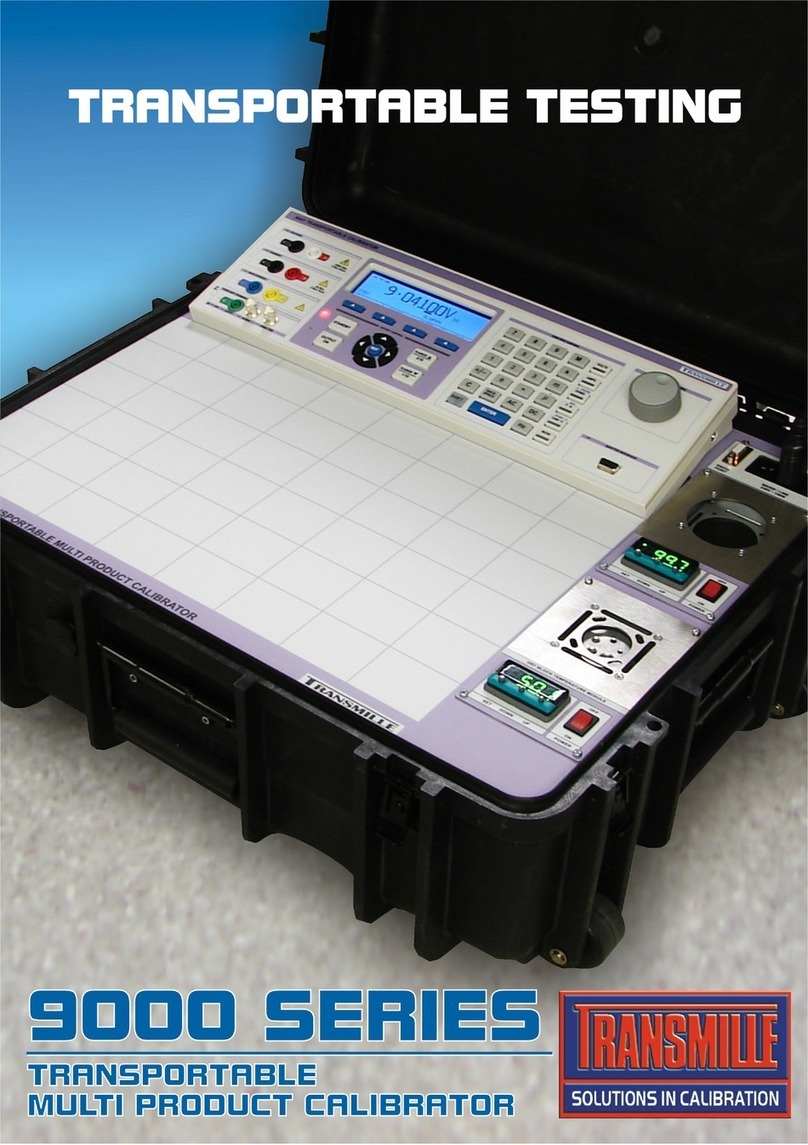
Transmille
Transmille 9000 Series User manual

Transmille
Transmille 3000HR User manual

Transmille
Transmille 3000 Series Use and care manual
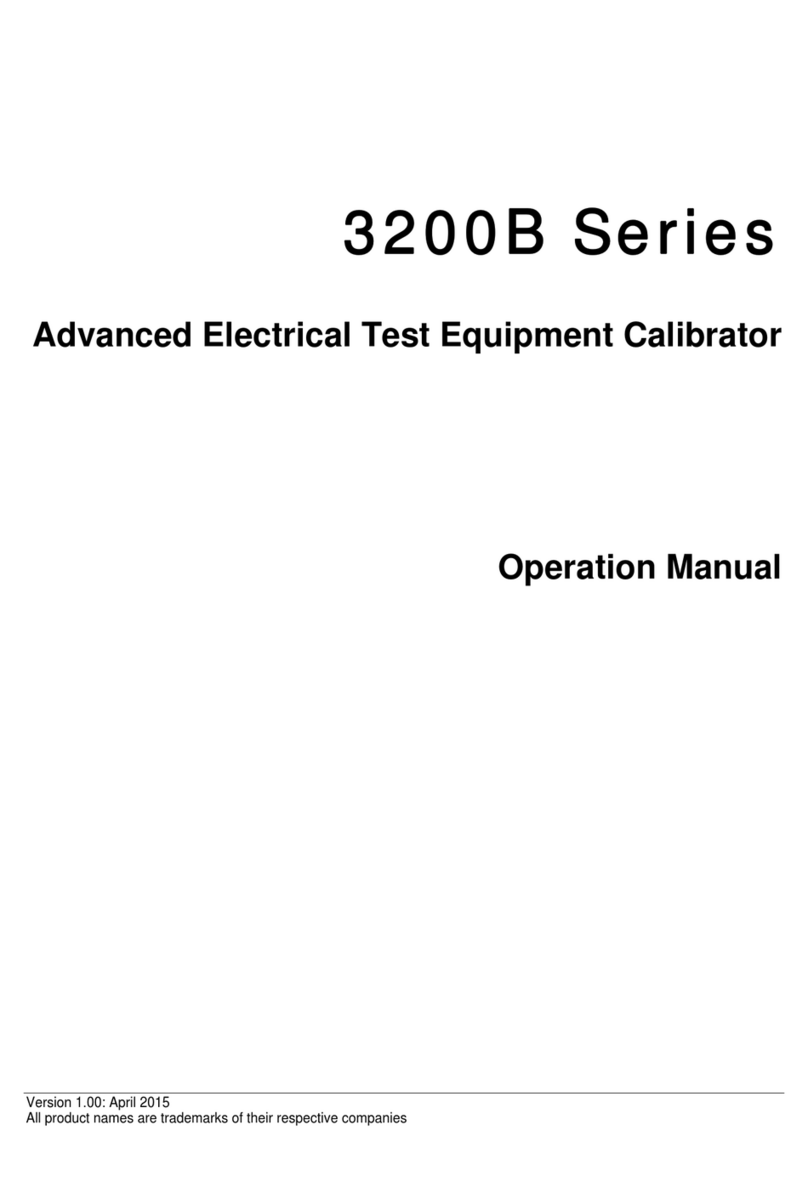
Transmille
Transmille 3200B User manual

Transmille
Transmille 3000 Series User manual
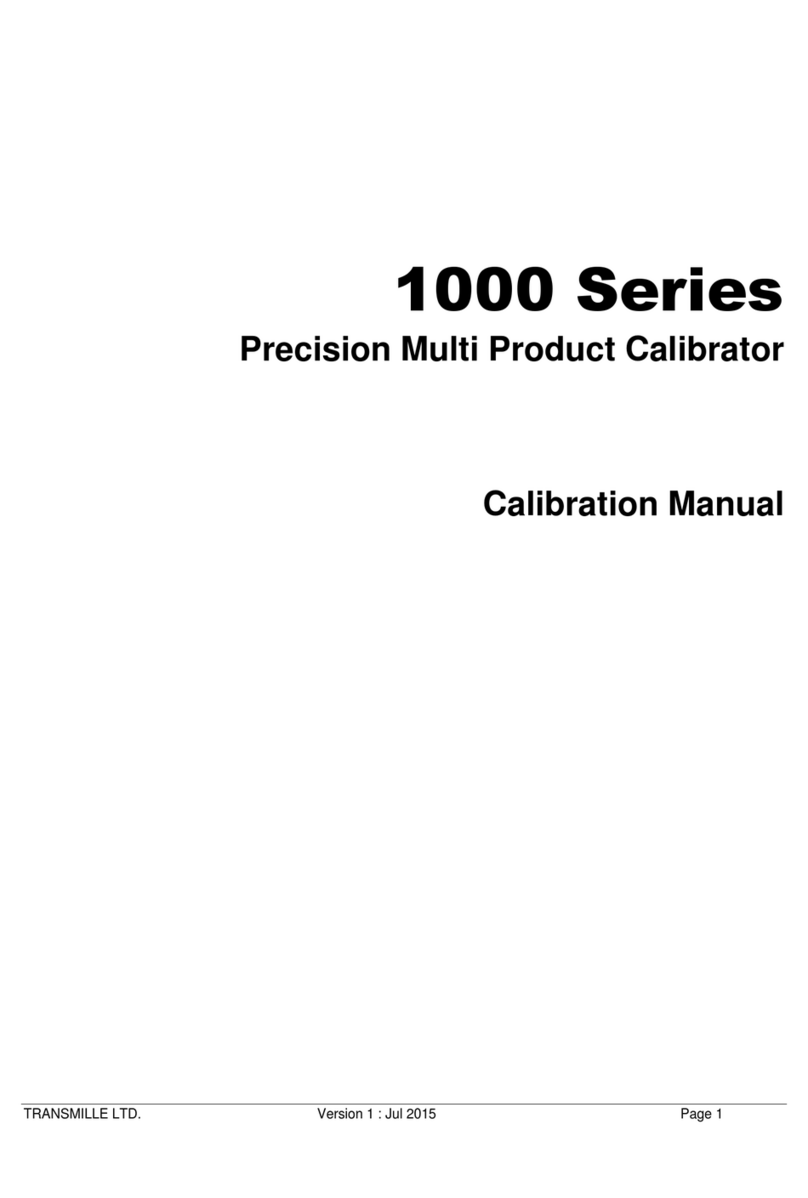
Transmille
Transmille 1000 Series Use and care manual

Transmille
Transmille 5080 User manual
